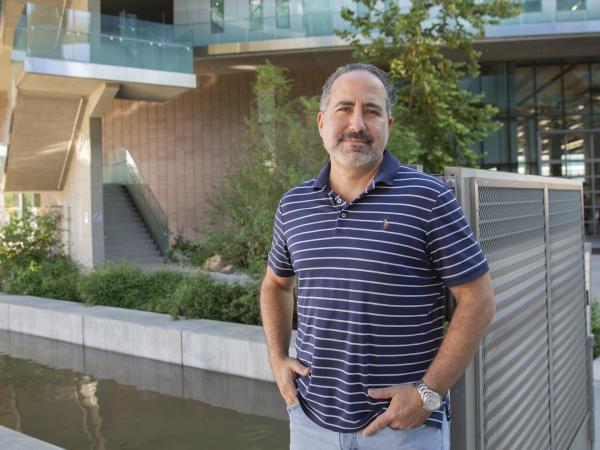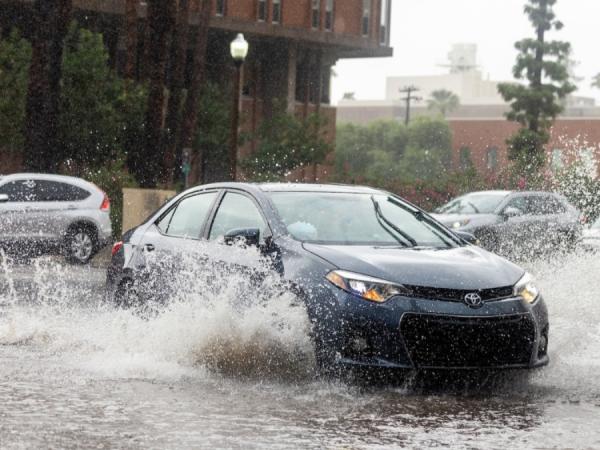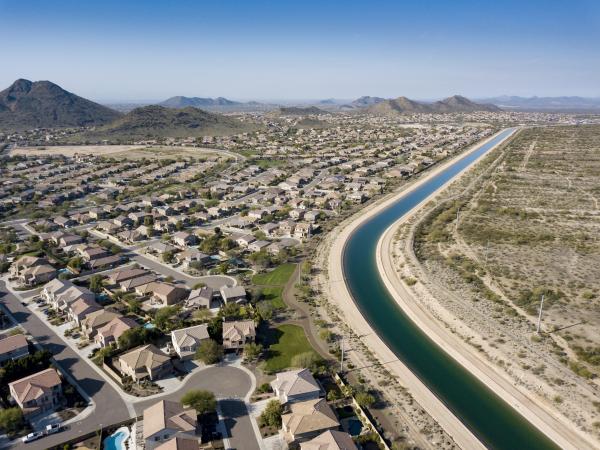
Yuma County residents complain about hard water taste
ASU’s Arizona Water for All helps residents in Yuma County cope with their hard water. Arizona Water for All (AW4A) is one of the five pillars of ASU’s Arizona Water Innovation Initiative, AW4A research scientist Patrick Thomson said. Researchers went door to door to test residents’ water inside their homes and interviewed them about their experience with their water. They found that the number one issue was taste.

Making waves in hydrology
When Enrique Vivoni looks back on his career, he doesn’t measure success by the number of papers published or citations accrued, though he has plenty. Instead, he sees converging timelines of relationships: students who grew into collaborators, partnerships that surged into centers and communities that took charge of their own futures.

Exploring the trickle-down effects of Arizona's fall storms
When rare bursts of rain sweep across the Valley, Arizonans can’t help but revel in the sound of thunder, the smell of wet creosote and the temporary relief from the heat. But while a soaking storm might feel like a gift to a drought-weary desert, the reality of Arizona’s water picture is far more complex.
No one understands that complexity better than Sarah Porter, director of the Kyl Center for Water Policy at Arizona State University’s Morrison Institute for Public Policy.

From campus to company: How research sparked a new water tech startup
Wildfire seasons are getting longer and hotter, threatening forests and the water supplies they protect. Forest restoration, especially thinning dense stands of trees, can reduce wildfire risk and improve water availability — but measuring the water benefits of forest management has been challenging.
That’s why Arizona State University Professor Enrique Vivoni founded the startup company Tributary. Its mission is to give utilities, governments, nonprofits and companies better tools to measure the real water outcomes of forest restoration projects.

Bone-dry soil can trigger 'drought heat wave' events a nation away
Drying soils in northern Mexico can trigger simultaneous drought and heat wave episodes in the southwestern United States, including Arizona and states like Texas and New Mexico, according to a new study involving an Arizona State University professor.
Co-authored by Enrique Vivoni, a senior global futures scientist with the Julie Ann Wrigley Global Futures Laboratory, the research underscores the increasing persistence of "hot droughts," which extend across consecutive days and nights, hindering recovery and posing significant risks to the region.

Groundwater issues have halted developments in Buckeye. Arizona has plan to move forward
A little more than two years ago, the state Department of Water Resources announced a moratorium on building new homes in some parts of the Valley that rely on groundwater. That came after the agency determined that there wasn’t an assured hundred-year water supply in those areas, as required under state law.
Kathleen Ferris is a senior fellow at the Kyl Center for Water Policy at Arizona State University and one of the crafters of the original Groundwater Management Act of 1980.

Tribes begin tackling the tradeoffs of AI at daylong ‘Wiring the Rez’
Cora Tso, who is Navajo and a senior research fellow specializing in tribal issues at ASU’s Kyl Center for Water Policy, stated “about 10 tribes are excluded from that conversation because we don't have our water rights resolved” — yet “we have some golf courses that are located on tribal lands that have the same water consumption use as some small AI data centers.”

Drinking Water Map Shows States With Most Contaminants
Another contributor is that different-sized utilities also have different sampling frequencies, Paul Westerhoff, a professor of sustainable engineering and the built environment at Arizona State University, told Newsweek.
He said that, for example, there are nine compounds of haloacetic acids. While the EPA currently regulates only five of them, some utilities and states report all nine, whereas others only report the five on which the EPA has implemented regulations.

Suburban growth in AZ depends on groundwater recharge plan
In its proposed plan of operations, the groundwater replenishment district expresses strong confidence in its ability to keep acquiring new supplies to meet its replenishment obligations, noting the wide availability of credits and the broad array of potential supplies.
Outside experts such as Ferris and Sarah Porter, the Kyl Center’s director, are more skeptical, citing the growing competition for all future supplies, including credits, their increasing costs, and the enormous number of legal and environmental uncertainties involved in bringing in new supplies.

Legal battle continues over Saudi groundwater pumping in Arizona
“Lawsuits are cumbersome, and they don’t necessarily achieve the kind of sophisticated results that people would like,” Kathleen Ferris, former ADWR director and senior research fellow at the Kyl Center for Water Policy said. “But again, if you can’t get anything done any other way, then people are tempted to go to court.”